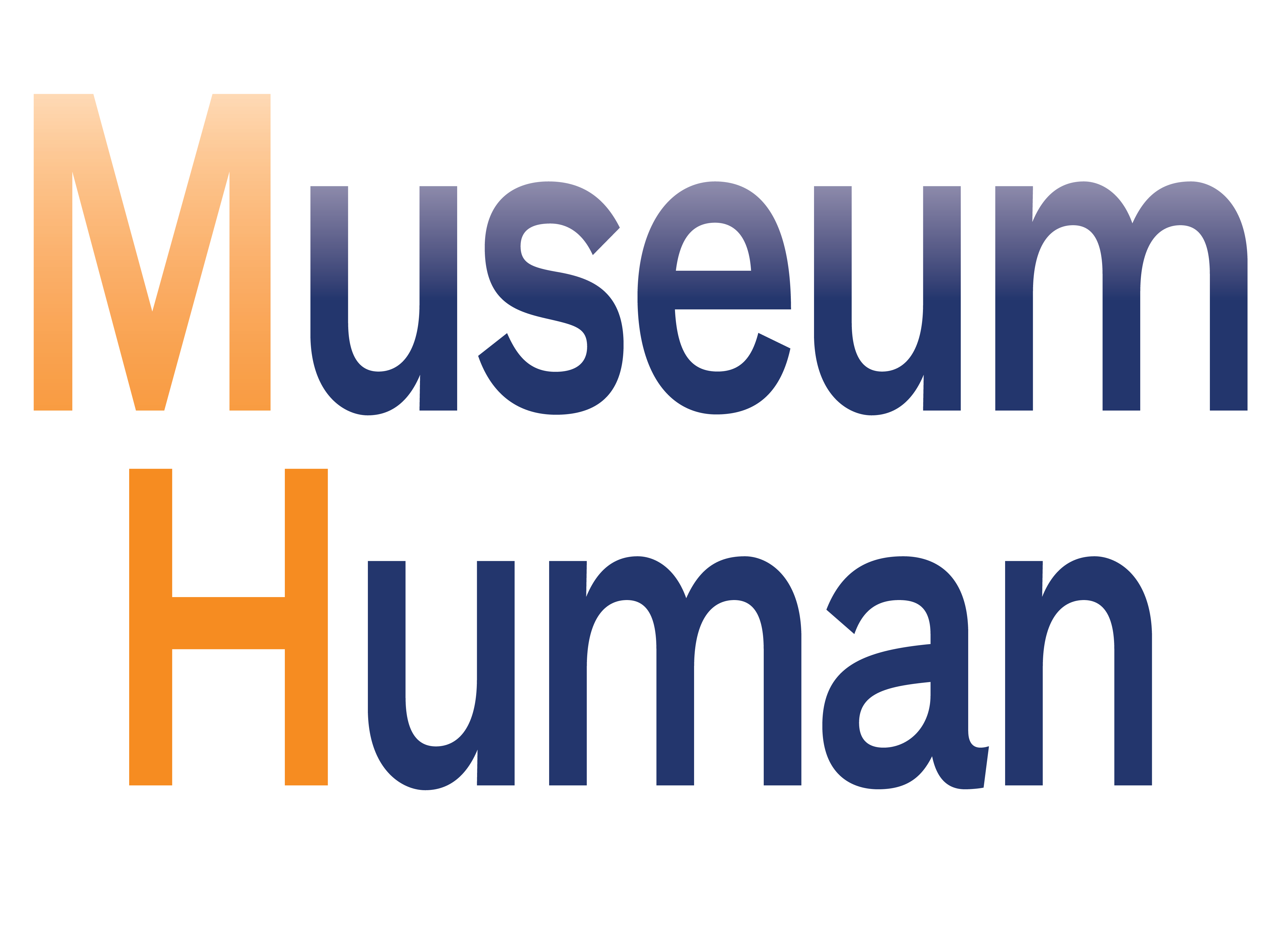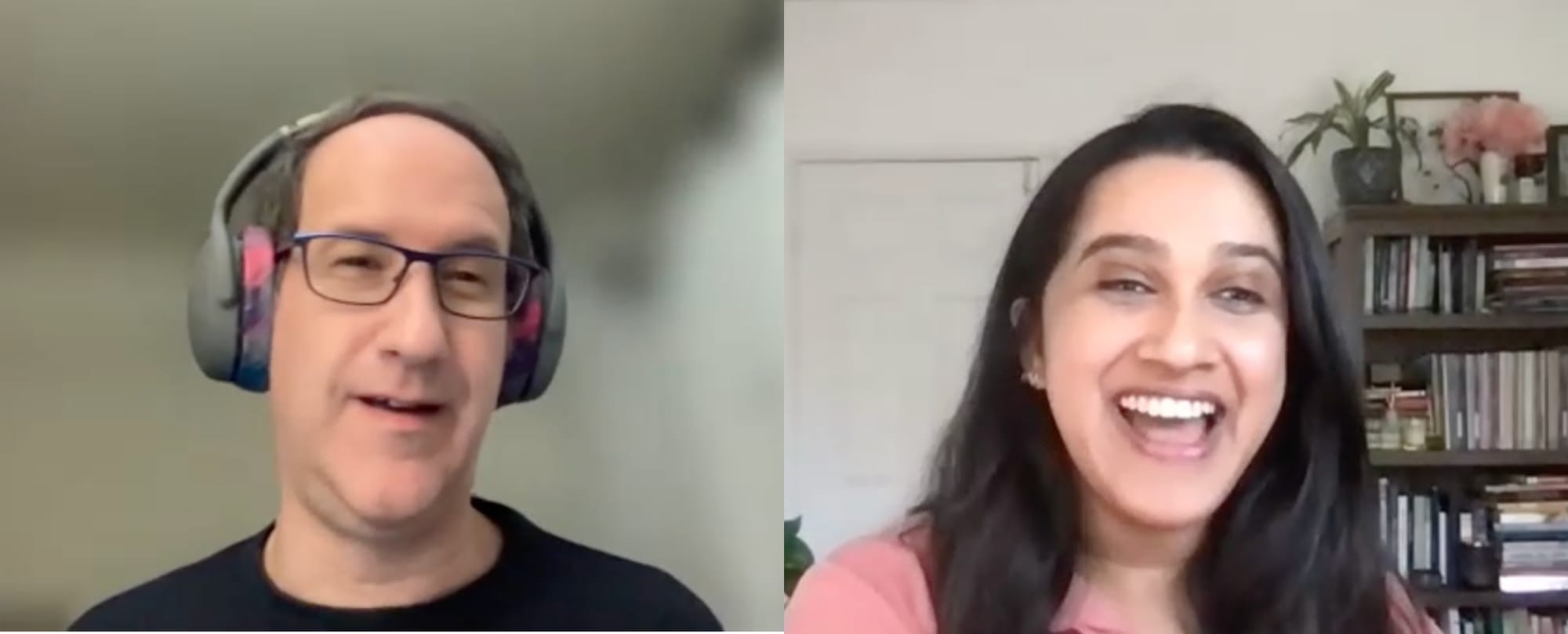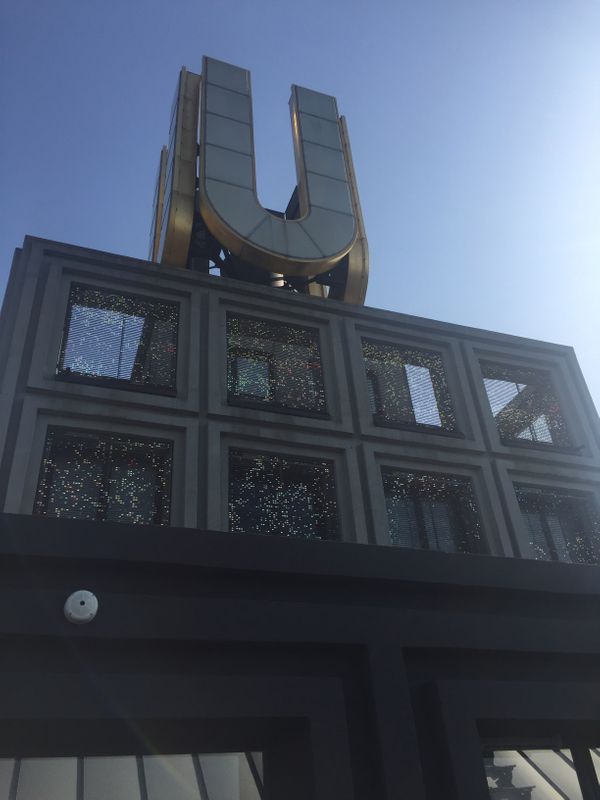
We overuse the term Agile in the organizational lexicon. A recent workshop explored a people-centered path to agile workplaces in the cultural sector.
If you're trying to avoid buzzwords in your workplace, have the term agile wiped from your brain using the sci-fi technology of your choice. (I'll go with The X-Files removing Mulder's memories of the alien-hybrid fighter plane in the show's second episode; the one-touch memory-cleansers in Star Trek seemed a little too pleased with themselves.)
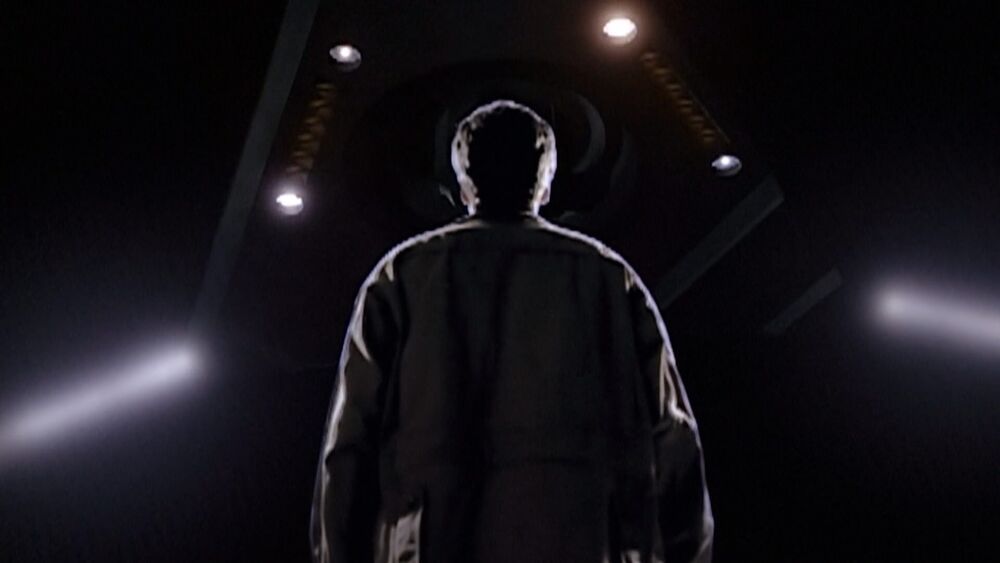
I was invited to present at a workshop in Dortmund, Germany at the end of July started to design an agile path to better workplaces in the cultural sector. We all want humanity and meaning (and decent, equitable pay and working conditions) in our jobs. The workshop turned agile inside-out to get the best of the method's principles without the buzziness of its application in non-software-development contexts.
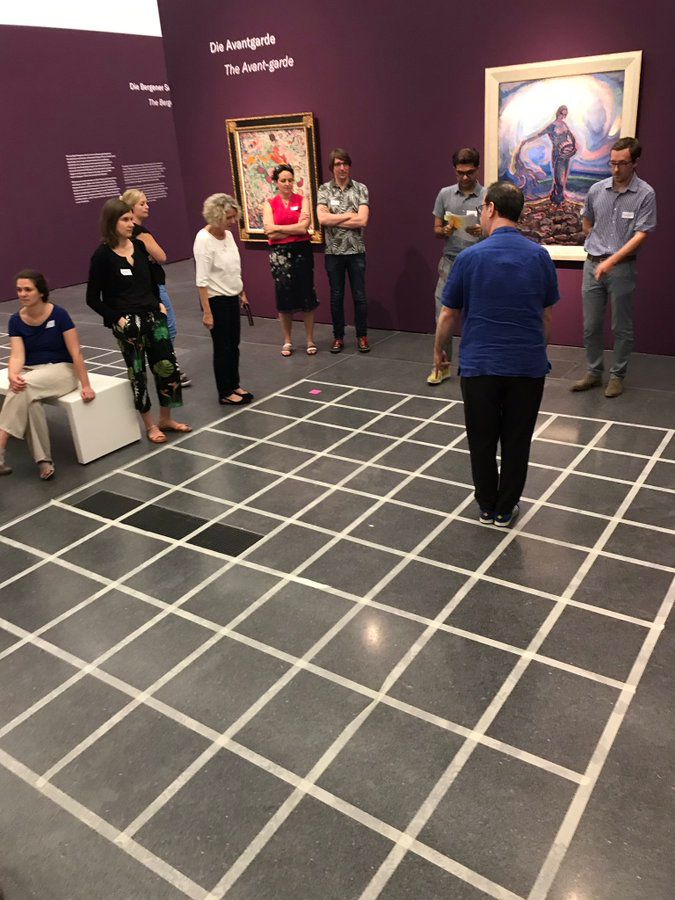
We came at the problem from several directions, discussing the impact of digitization, digital literacy for staff, audience engagement, experimentation, and collaboration. The workshop organizers—Dr. Abhay Adhikari and Cori Moore—weren't trying to force cultural sector workplaces into an agile box. The "Manifesto for Agile Software Development" is not supposed to apply to every sector in every situation. Where people get interested in agile for humanist uses comes through in these principles stated on the manifesto homepage:
• Individuals and interactions over processes and tools
• Working software over comprehensive documentation
• Customer collaboration over contract negotiation
• Responding to change over following a plan
I'm seeing some use cases for museums. Aren't you?
I won't do a blow-by-blow recap, as Abhay did a great job of that on Medium. Instead, I'll focus on my own reason for flying to Europe for a one-day workshop, besides a chance to see Cologne Cathedral towering over me when I left the train station and to visit the great Städel, Liebieghaus, and Schirn museums in 103°F-Frankfurt (and Germany is not a totally air-conditioned country; we are not ready for this).
"From Deadlines to Priorities"
The organizers gave me this "provocation" and asked me to address the dehumanizing aspects of deadlines. Now you may ask, but how can museums function without deadlines? What about the exhibition opening, the catalogues arriving in the store, the labels fabricated and put on the walls?
I'm not advocating for a when-we-want-to-do-it cultural sector free-for-all. We in museums know the work that goes into getting an exhibition open, content created, and programs launched. What I'm saying is that the collateral damage of toxic workplaces, made manifest in behavior over deadlines, is how cultural institutions turn workers against each other. The Matrix, as I've said many times, wants us to turn away from our common humanity to workplace rules and processes. I proposed that deadlines represent processes while priorities connect us with people—ourselves and others.
The points I made in my talk (a PDF of the slide deck is here):
- Deadlines are usually expressions of power and borders between us and them, and often take the form of …
- Secrets and lies which infect our workplaces and workflows with "unwritten rules," almost always about what people we need to exclude, defend ourselves from (because of power imbalances), talk shit about, so why don't we …
- Talk instead about priorities, which come from listening to other people and learning what they value, the act of which allows us to meet others' needs and give us space to …
- Figure out our values, make our own change, and get into a bit of trouble by stretching beyond just what's expected of us, and whom we're allowed to work with, and then we find that we …
- Are not only learners but also teachers, which makes for the best expression of the agile, growth mindset.
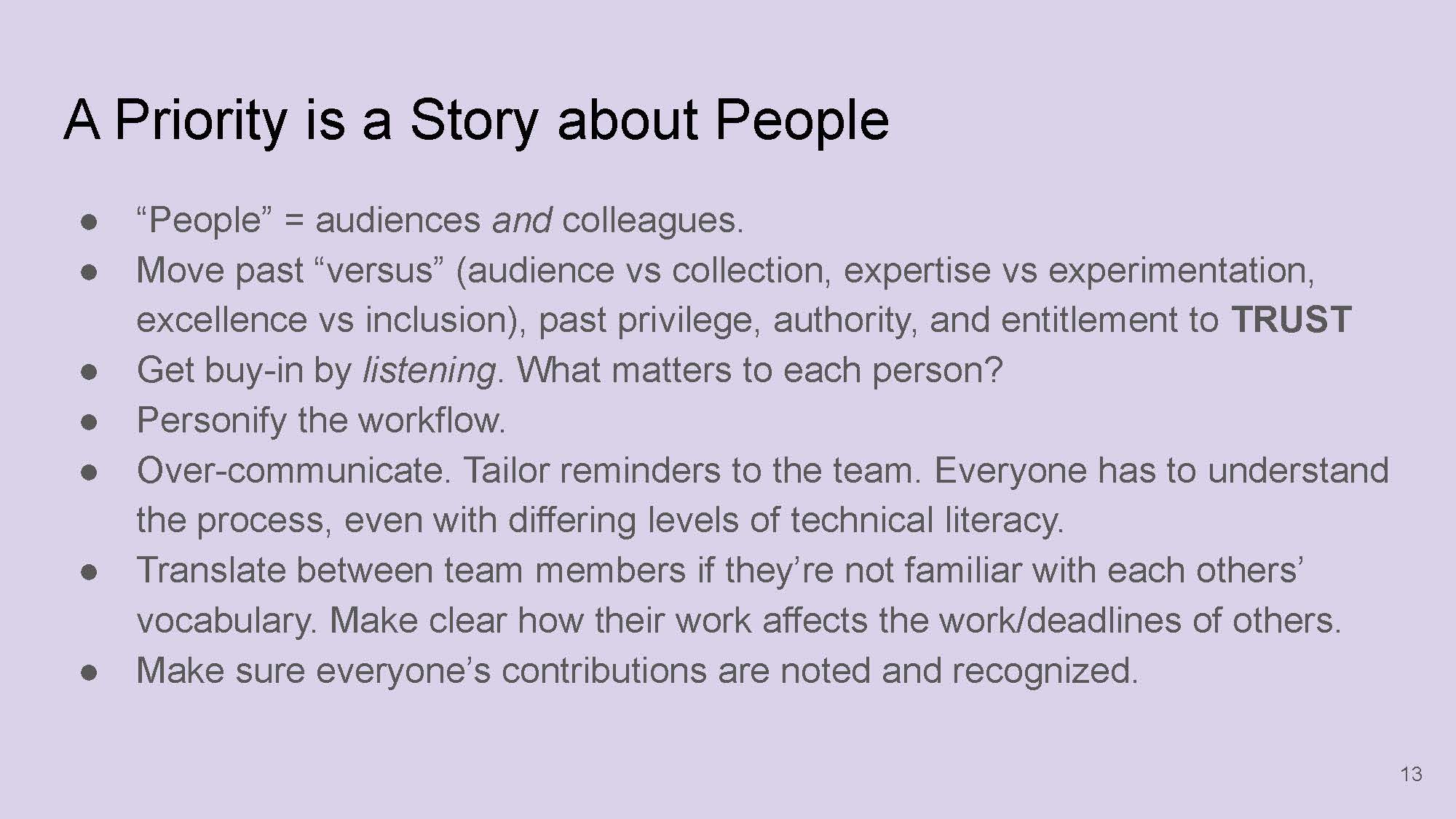
As part of my talk, I put together a few exercises for the workshop.
- I asked the group to consider what the word "deadline" meant to them. Do you think about yourself, or about the other people who may not get you what you need to make the deadline? Think of one word (like "anxious," "scared," or "energized"), write it on a sticky, and place on a grid of "good" vs "bad" and "internal" (primarily thinking of yourself) vs "external" (primarily thinking of other people, like the person who'll flout the deadline with no consequences). The good/internal quadrant is a place of intrinsic motivation, and the good/external quadrant is a place of trust throughout the team and organization. These places are pretty damn rare, but provide a sense of what's holding you back from feeling safety in deadline situations.
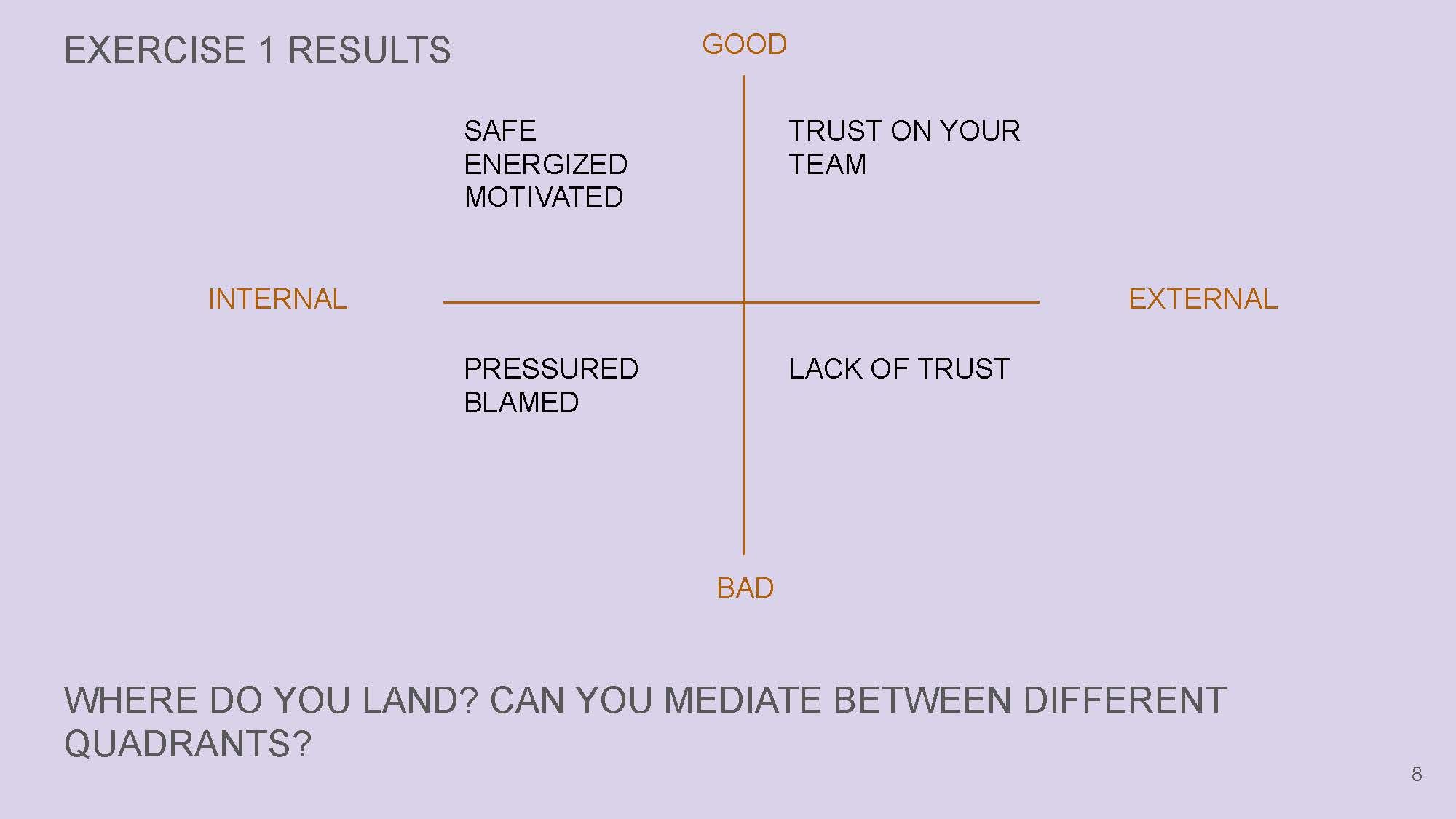
- I suggested that questions about processes—which I defined as when? where? how?—were better framed as questions about people—why? who? what? (as in, what important needs have people told us about?) I've seen this type of exercise in various places and have always found it useful.
- I mentioned an exercise I’d found useful in figuring out my own values and what was important enough to get in some trouble over. “Even over” statements, which I first read about in a blog by org culture consultancy NOBL, can clarify what we’re willing to sacrifice for a greater good. For instance, I have usually favored consensus even over quick decisions. We not only figure out priorities by listening to our colleagues and visitors, but by knowing what’s critical to us.
I also provided a bibliography of articles about museums and/or organizational culture, many of which inspired my talk.
Please read Abhay's Medium piece—he summarizes my talk very nicely!
My Fellow Speakers
I was one of six people to address the workshop. The other speakers were an amazing group of cultural sector practitioners.
- Jasmin Vogel, Head of Marketing at Dortmunder U, gave a terrific introduction to digital literacy—I can't describe it better than Abhay did in his recap:
a transdisciplinary, cross-platform approach to asking questions and solving problems.
- Dr. Martina Taubenberger, Arts Manager of the Whitebox in Munich, described how to create teams of intrinsically motivated individuals with self-fulfilling roles and responsibilities. Titles mean less than the meaning of the work. Why create terrible teams just to satisfy stakeholder bingo? She was talking about empathetic leadership, especially when some individuals don’t seem to “get” the new teams and new (often digital) practices of work.
- Michal Čudrnák, Head of Digital Collections and Services at the Slovak National Gallery in Bratislava, showed how to roll out new technologies while still keeping the impact on colleagues simple. The organizers had us write the name of an all-important technology on a sticky note and then place it into a figurative trash can. When technology matters more than the people, it belongs in a dustbin.

- After lunch, and my talk, Daniel Neugebauer, Head of Communication and Cultural Education at the Haus der Kulturen der Welt in Berlin, contrasted the tyranny of technologies and the polarization they engender with a more intersectional way of viewing our audiences, our work, our colleagues, and ourselves.
- Mechthild Eickhoff, head of the UZWEI Kulturelle Bildung at the Dortmunder U, spoke about an actual agile transformation her organization attempted around bringing an outsider group—in this case, skateboarders who used the area around the arts center as a skate park—in to co-create an exhibit on their culture. Everything that's useful about agile as a concept was on view here, as they quickly, but with a light touch, helped put together a show about, but by and for, this group who hadn't seen a museum as a place for them. When agile is done right—and with the right intentions, with a real desire to have the right impact—it can be transparent and free.
I would have liked to have talked more to the group about agency as a practice, about work having meaning through getting rid of the wrong rituals, and the need to keep questioning buzzwords, even agile. I do feel that I imparted to the workshop the importance of creating a learning and teaching environment in our workplaces. We have to learn from everything in order to perform the knowledge function of cultural institutions. To me, this is the essence of agile for us.
What I'm Reading
I'm powering through The Age of Heretics: A History of the Radical Thinkers Who Reinvented Corporate Management, by Art Kleiner, from 2008—it's a good reminder that there are no really new concepts in workplace org design, just new ways of applying them in ever-changing circumstances. It's also a reminder that you, change agent, will eventually get crucified for your best intentions.

If you enjoyed this post, and you're not already a member of Museum Human, consider subscribing for free to read more about issues in the museum sector through an organizational culture lens. It's the only way to read new posts, get full access to the entire MH archive, and check out exclusives like the members reading list. Subscribe and join hundreds of your fellow cultural-sector readers today!
cover photo by the author of the top of the building housing the Dortmunder U, Center for Arts and Creativity, several cultural institutions under one roof. Thanks to Jasmin Vogel for the post-workshop tour! [Description: the top of a building with a large metal "U"]

Hey, Cultural Sector, Agile This by Robert J Weisberg is licensed under a Creative Commons Attribution-NonCommercial-ShareAlike 4.0 International License.
